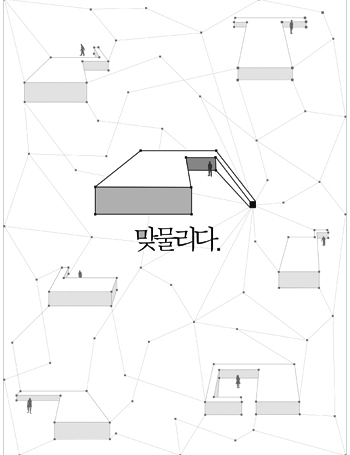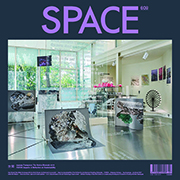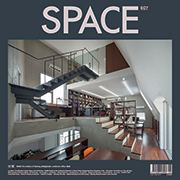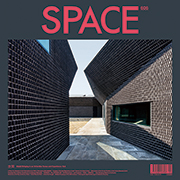09' the 2009 th space prize for international students of interior design
- Design for an Action and Thinking -
SUBJECT
Design for an Action and Thinking
The results came out for the Ninth Space Prize for International Students of Interior Design 2009. The theme this year was “Design for an Action and Thinking.” The aims were to seek possibilities of design that play a role in realizing ideals that our society aspires to by moving people's minds and encouraging them to take action. The judge, Moon Jeon-mook, said that “the beauty of design should provide a reason for thinking and for action beyond the sensual consciousness and, consequently, change society in a proactive manner.” He explained that design “should embrace social ideals as a living entity, offer sophisticated philosophies to the artificial world, and provide a vision for abundant life to people who experience all of this.”
In the first review, a total of 11 teams were selected for the second round. The chief judge, Choi Si-young, delivered advice and instructions to the teams in person, taking public presentation to a higher level. On October 21, the public presentation, award announcement and prize ceremony took place at Space Love, a small theater in the company building of the Space Group. The Grand Prize went to “A Waiting Space Becomes a Playing Space” by Jeon Young-hun, Yoo Jin-ju (Hanbat National University, Major in Architecture) and the Best Prize went to “Looking through the Cats’ Eyes” by Park Mi-reoung (Hongik University, Architectural Engineering). The Excellent Prizes were awarded to “Always Always” by Kim Ji-seon, Han Ae-sook and Han Song-yi (Sookmyung Women’s University); “Reflect the Thinking” by Ahn Dong-young (Sangmyung University, Interior Design); and “Hyo Jea” by Kang Da-hye and Choi Jung-mi (Kookmin University, Interior Design). The exhibition for their works was held from Oct. 22 to Oct. 28 at the Space Love theater. SPACE will cover the winning works and teams at the Space Prize for International Students of Interior Design 2009.
JURY REPORT
Choi Si-young
President of Living Axis
Moon Jeong-mook
Professor of Sang Myung University
We had some major concerns while assessing the entries for this competition, which turned out to be well founded. We had hoped to see fresh and original ideas from the students, yet we felt that the designs disappointed our expectations. Speaking from a personal point of view, the screening process was extremely difficult. We were somewhat embarrassed by the quality of the submissions by students for the preliminary judging. This led us to think that we need to better train students on how to properly organize a concept. Displaying such a low quality of competitiveness, I wonder how these students would be able to compete on the international stage. In some cases, the hands seemed to have moved ahead of the ideas, while with other students, although they showed better ideas, their hands did not follow through enough. In this year’s competition, as well as in the past, we experienced an imbalance between the two abilities. What is most important is for the students to be able to explain in a persuasive manner why they are designing in a certain way.
Nevertheless, there were a few students who showed potential, as well as interesting ideas. It left us with a feeling of some regret: If they had developed their ideas better, they could have produced some very good designs. For the students, though, this should be regarded as a good experience. They will realize how valuable this experience has been once they graduate from school and pursue their careers. Nowadays, our society requires topics for stories and the interpretation of sensibilities. Students tend to take an interest in excessively big things, yet what is really needed is just the ability to complete small things well. When we view entries for interior design competitions, for example, it is sometimes difficult to distinguish whether a proposal is architecture or interior design. It is important to enhance finesse at the smaller stages than at the larger scale of architecture.
Another problem that we noticed with the entries for this competition was their obsession with form. The students appeared to be easily seduced by form, whereas their reflection on the process needed to create the form was insufficient. As they approached the competition preoccupied with the idea of aesthetic form, the theme was easily botched. This is also a problem with the nation’s education. As competition intensifies, even in school, students seem to have a habit of trying to easily attract attention through visual elements. We believed that it would be good for this competition to go against this tend. We thus focused our judging on content, which, while it may not necessarily be visually fascinating, it is faithful to concepts, and it does make society stop and pause to think. We gave high scores to entries that showed reflection and the unfolding of a story; and entries that tried to approach the theme, even though they were not visually spectacular.
We would like to ask students to realize in future competitions that it is better not to adopt overly ambitious and big concepts. It is understandable that students may wish to take such risks, yet we often regret when they take this kind of approach. The size of the concept does not necessarily always directly translate into competitiveness. We therefore hope that students will undergo more training, so as to better draw concepts and stories from smaller things.
Subject Description
Design for an Action and Thinking
Material prosperity due to the Industrial Revolution in the 18th century led to a strong belief in rationality and made the world more systematic. The word “design” conveys the “aura” discovered in crafts during the pre-industrial era, to the public than any other era. The word “design” also established the aesthetic element to complement functional element of designed objects. Thus, aesthetic elements existed in relatively passive and contemplative position, separating itself from functional and cultural elements. This applied to space or interior design as well, in which “design” only existed in the form of aesthetical element which was merely added to the interpretation of function of life, failing to be actively integrated into cultural and functional elements.
Every society formulates a certain philosophy appropriate to their living era and organizes itself within their philosophical context. Inside the philosophy, there exist the ideals that the society always dreams of. The time has come when design should step forward from a passive position to an active status of including the social values and philosophy into designs, and becoming an active member in transforming the society into a better one.
The aesthetic aspiration of design should not be limited to the phase of sensational perceptions of people, but should expand itself to become an active stimuli to change the thoughts of people and through this, actively changing the society. By fulfilling such a role, design should become an individual element that will provide an advanced form of philosophy and enrich the lives of the people.
In this year’s 9th Space Prize for International Students of Interior Design, the theme is “Design for Action and Thinking.” Design moves people’s heart and stimulates the actions and thoughts of people. It plays a vital role in making the ideal society. The message that the “space” speaks to the people will stimulate them to act and think in different directions, thus, stepping closer to the idealized society.
We look forward to see free spatial creations that will develop our society into a more valuable one.
GRAND PRIZE
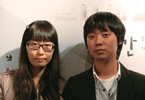
Jeon Young-hun, Yoo Jin-ju
Major in Architectural Design,
Hanbat National University
A Waiting Space Becomes a Playing Space
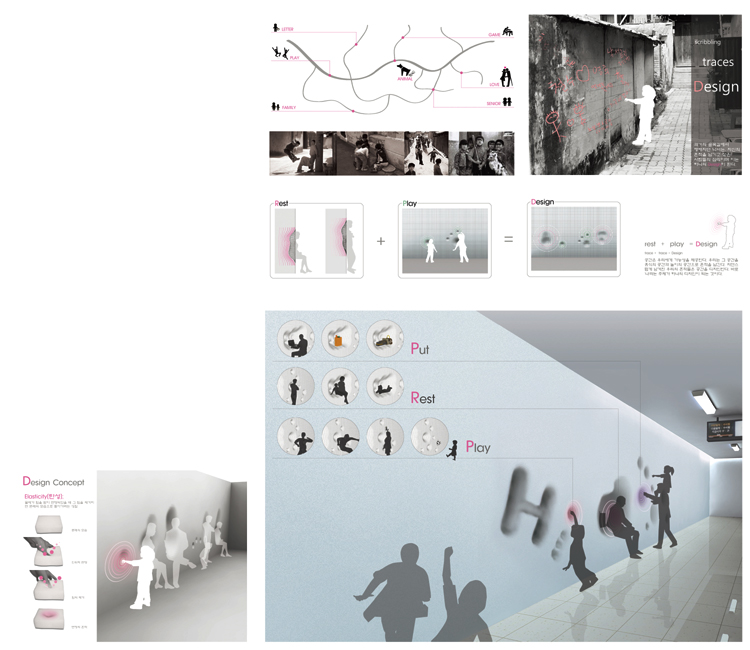 During the analogue era of the past, a warm affection brought people together. However, now, with individualism so prevalent, various spaces have been developed, and people’s ideas have become confined within such spaces, even though their lives are more affluent. The era when people were designing society has been replaced by an era when design determines our lives. Subway platforms are some of the most common everyday waiting spaces, where people spend time meaninglessly, without doing any actions or thinking. We attempted a modern reinterpretation of the play culture of small alleys of the past, where various activities took place. By doing so, we transformed the dry and dull space of the platforms into one where people can engage in fun activities. Graffiti on alley walls are not only a recreational activity, but are also a means to publicize the artist and his work. Taking note of such activities, we proposed an idea that gives elasticity to the walls of the subway platform, allowing people to touch them and draw on them. The drawings created by touching and pressing will remain as traces and they will become design even after those who made the traces have departed. They become an object of play and action, transforming a formerly space into one where people can experience fun and enjoyment.
During the analogue era of the past, a warm affection brought people together. However, now, with individualism so prevalent, various spaces have been developed, and people’s ideas have become confined within such spaces, even though their lives are more affluent. The era when people were designing society has been replaced by an era when design determines our lives. Subway platforms are some of the most common everyday waiting spaces, where people spend time meaninglessly, without doing any actions or thinking. We attempted a modern reinterpretation of the play culture of small alleys of the past, where various activities took place. By doing so, we transformed the dry and dull space of the platforms into one where people can engage in fun activities. Graffiti on alley walls are not only a recreational activity, but are also a means to publicize the artist and his work. Taking note of such activities, we proposed an idea that gives elasticity to the walls of the subway platform, allowing people to touch them and draw on them. The drawings created by touching and pressing will remain as traces and they will become design even after those who made the traces have departed. They become an object of play and action, transforming a formerly space into one where people can experience fun and enjoyment.
PRIZE OF EXCELLENCE
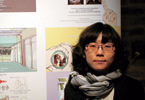
Park Mi-reoung
Department of Architectural Engineering,
Hongik University
Looking through the Cats’ Eyes
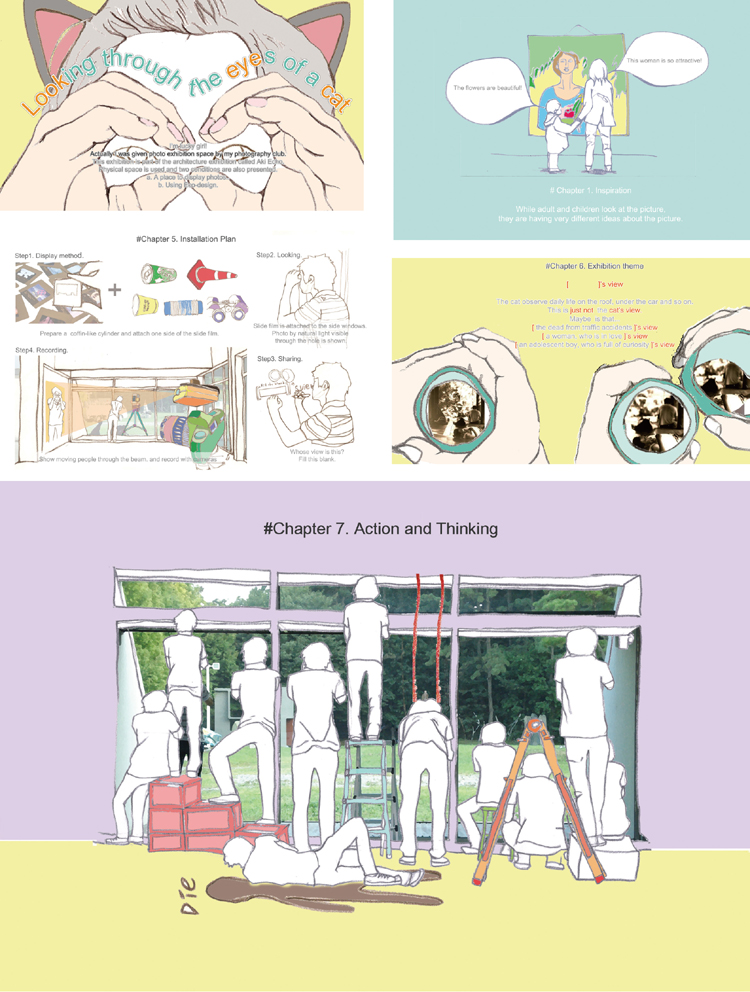 A child and an adult are looking at a picture of a woman holding a flower. The adult says that the woman in the picture is attractive, while the child says that the flower she is holding is pretty. The adult and the child, each with different viewpoints, are having different thoughts while looking at the same picture. I intended to organize an exhibition space that enables people to think in more diverse ways. I aimed to provide multiple viewpoints by using active movements, like those of a cat that is running here and there. The viewpoint is not merely of a cat, it could be that of a boy, or of a woman in love.
A child and an adult are looking at a picture of a woman holding a flower. The adult says that the woman in the picture is attractive, while the child says that the flower she is holding is pretty. The adult and the child, each with different viewpoints, are having different thoughts while looking at the same picture. I intended to organize an exhibition space that enables people to think in more diverse ways. I aimed to provide multiple viewpoints by using active movements, like those of a cat that is running here and there. The viewpoint is not merely of a cat, it could be that of a boy, or of a woman in love.
SPECIAL PRIZE
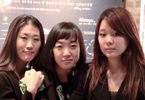
Kim Ji-seon,
Han Song-yi,
Han Ae-sook
Sookmyung Women’s University
Always Allways
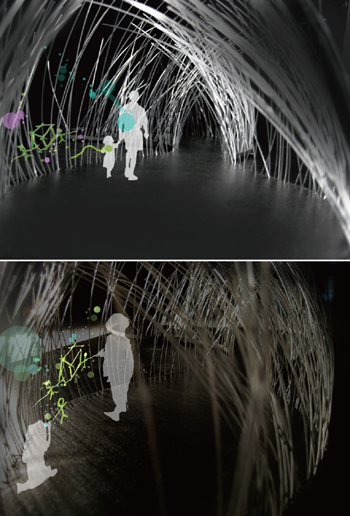 Space starts from an assumption that the ultimate elements that make up the world are not insignificant particles. People who are leading busy lives are placed in an ironical situation, where they suffer from lack of time rather than enjoying leisureliness in their saved time. People who show insecure movements and lose their identity exist as dots in the society. Our space allows such people to realize their value and reflect upon their lives. As soon as people enter space, they leave behind their traces. Whenever they make contact with the space, their traces are remembered in the space as visual form. Through vibration in the space (number of heartbeats), people contact with linear space and experience a phenomenon where time disappears. People from outside enter the space and leave their traces on top of those left by others, and the patterns create overlapped forms. Individuals communicate with others through the space, and the space acts as an emotional medium that allows people to interact others.
Space starts from an assumption that the ultimate elements that make up the world are not insignificant particles. People who are leading busy lives are placed in an ironical situation, where they suffer from lack of time rather than enjoying leisureliness in their saved time. People who show insecure movements and lose their identity exist as dots in the society. Our space allows such people to realize their value and reflect upon their lives. As soon as people enter space, they leave behind their traces. Whenever they make contact with the space, their traces are remembered in the space as visual form. Through vibration in the space (number of heartbeats), people contact with linear space and experience a phenomenon where time disappears. People from outside enter the space and leave their traces on top of those left by others, and the patterns create overlapped forms. Individuals communicate with others through the space, and the space acts as an emotional medium that allows people to interact others.
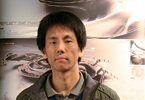
Ahn Dong-young
Department of Design,
Sangmyung University
Reflect the Thinking
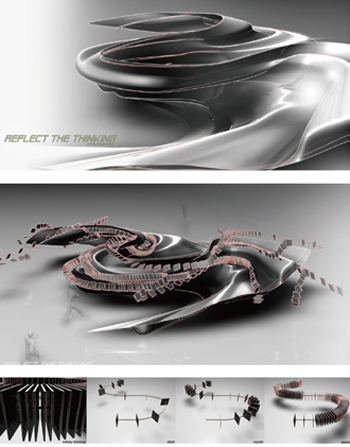 I exhibited a new form of diary in the space. A diary is a large space that contains all ideas and experiences according to time, including nostalgia, reflections on the past and wishes and expectations for the future. If a diary that can hold such diverse ideas is taken out from a drawer and seen through a space, the space would be able to naturally accommodate these various ideas. In other words, this space is one where people from all walks of life set goals according to their own timeline. For instance, if somebody pledges to pass an exam in the space and finally passes the exam, the purpose of the space has been achieved. The space I planned merely started with displaying a dairy, yet people who experience the space would experience change in ideas and behaviors. “Recording Space” can be considered a medium that can reflect present ideas wished by individuals into the future.
I exhibited a new form of diary in the space. A diary is a large space that contains all ideas and experiences according to time, including nostalgia, reflections on the past and wishes and expectations for the future. If a diary that can hold such diverse ideas is taken out from a drawer and seen through a space, the space would be able to naturally accommodate these various ideas. In other words, this space is one where people from all walks of life set goals according to their own timeline. For instance, if somebody pledges to pass an exam in the space and finally passes the exam, the purpose of the space has been achieved. The space I planned merely started with displaying a dairy, yet people who experience the space would experience change in ideas and behaviors. “Recording Space” can be considered a medium that can reflect present ideas wished by individuals into the future.
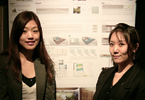
Kang Da-hye,
Choi Jung-mi
Department of Interior Design,
Kookmin University
Hyo Jea
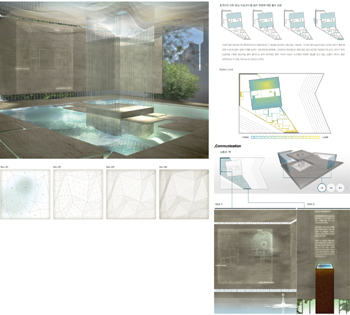 When we were young, when we threw coins, we were always curious about where they would land. When people throw coins in Hyo Jea, the water in the pond flows down to the pyramid. Such an act of donation, which seems like play, is naturally blended into people’s lives. For Koreans, who are not mature enough in terms of donation awareness, Hyo Jea is more meaningful in that it makes the act itself more familiar, rather than placing focus on the amount. The fictional object for which people prayed wishes while throwing coins, is substituted by actual entities in need. Wishes for personal safety and for the people around them extend to include selfless realms, prompting a change from one-sided relationships to interactive relationships. Through a small act of throwing coins, people can reflect on their acts, albeit in a small way, and when the ideas of many people are gathered, they can exert much greater power.
When we were young, when we threw coins, we were always curious about where they would land. When people throw coins in Hyo Jea, the water in the pond flows down to the pyramid. Such an act of donation, which seems like play, is naturally blended into people’s lives. For Koreans, who are not mature enough in terms of donation awareness, Hyo Jea is more meaningful in that it makes the act itself more familiar, rather than placing focus on the amount. The fictional object for which people prayed wishes while throwing coins, is substituted by actual entities in need. Wishes for personal safety and for the people around them extend to include selfless realms, prompting a change from one-sided relationships to interactive relationships. Through a small act of throwing coins, people can reflect on their acts, albeit in a small way, and when the ideas of many people are gathered, they can exert much greater power.
HONORABLE MENTION
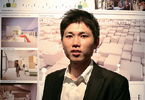
Kwon Oh-seek
School of Architecture and Building Science, Chung-ang University
Min Seok-ki
Interior Architecture, The School of the Art Institute of Chicago
Idea Store: Interaction
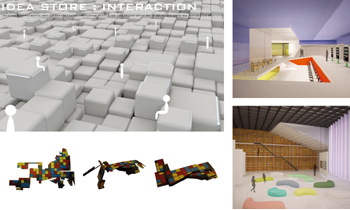
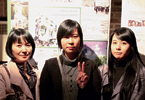
Kim Hee-won, Lee Moon-sook, Choi Eun-hye
School of Fine Arts, Baekseok Arts University
A Natural Park Disguise as a Building
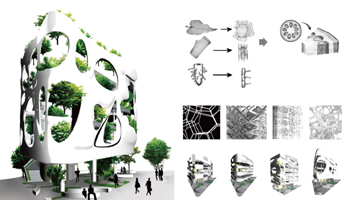
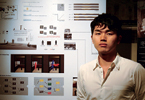
Yang Jun-young
Department of Architectural Engineering, Inha University Graduate School
Detective Space
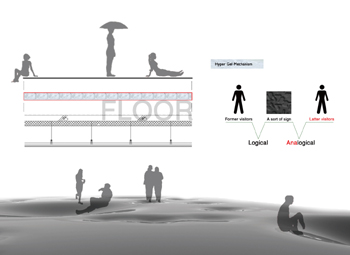
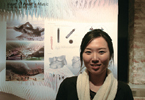
Lee Ka-yeon
Department of Interior Design, Kookmin University
Heart ∩ Heart = Music
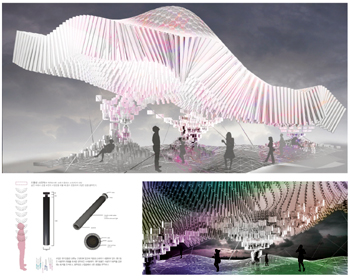
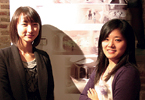
Byun Go-un, Kim Su-jin
Department of Interior Design, Kookmin University
Sloway
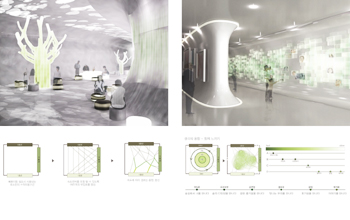
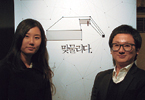
Jung Sang-yong, Kim Sun-hwa
Department of Housing Studies, Chung-ang University
Gear
